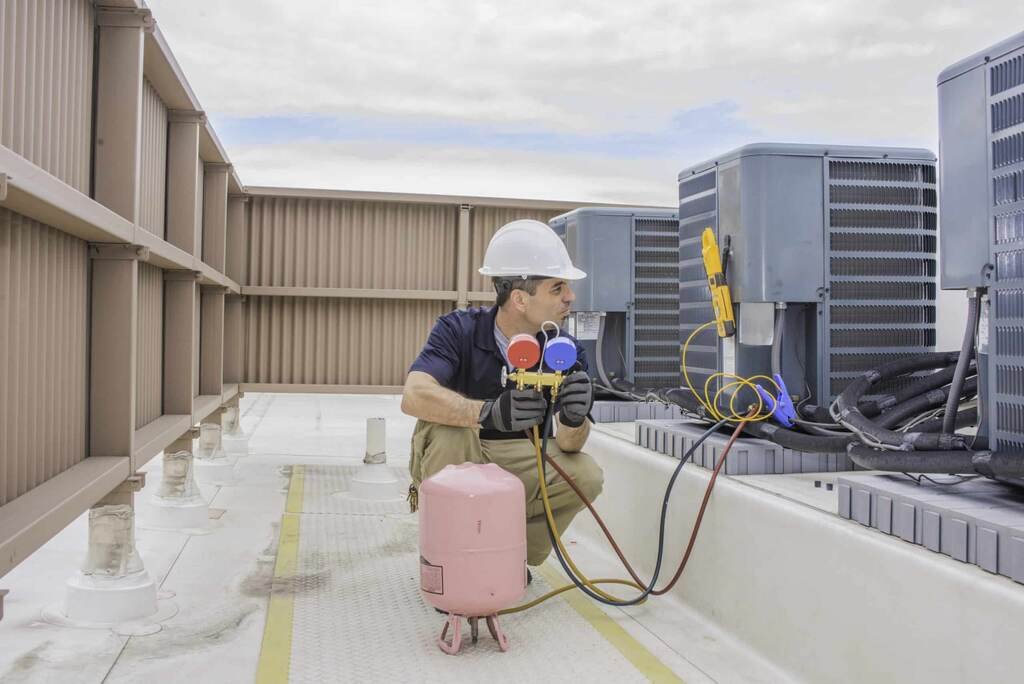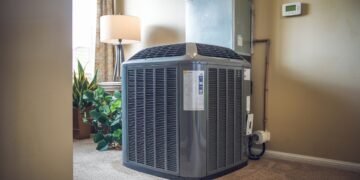Proper refrigerant handling is the cornerstone of successful HVAC installations. With the critical role that refrigerants play in these systems, it is imperative to prioritize their appropriate management and treatment.
By adhering to strict guidelines and industry best practices, technicians can ensure not only the efficient operation of HVAC units but also safeguard the environment and maintain compliance with regulations.
When it comes to proper refrigerant handling, meticulous attention to detail is paramount. Firstly, technicians must be well-versed in the types of refrigerants commonly used in HVAC systems. This knowledge enables them to select the most suitable refrigerant management for a specific application, considering factors such as environmental impact, system requirements, and regulatory compliance.
Additionally, a comprehensive understanding of safe handling practices ensures that technicians can prevent leaks, spills, or other mishaps during the installation, servicing, or decommissioning processes.
Understanding Refrigerants
Refrigerants are substances used in HVAC systems to transfer heat between the indoor and outdoor units. There are various types of refrigerants available, including hydrofluorocarbons (HFCs), chlorofluorocarbons (CFCs), and hydrochlorofluorocarbons (HCFCs).
It’s essential to understand the environmental impact of different refrigerants, as some contribute to ozone depletion and global warming. Strict regulations and standards have been put in place to mitigate these risks and ensure safe handling practices.
Pre-Installation Considerations
Before installing an HVAC system, several considerations regarding refrigerant handling need to be addressed. It’s crucial to select the right refrigerant that aligns with the system requirements and environmental regulations. Compatibility between the refrigerant and the HVAC system components should also be considered to avoid compatibility issues. Proper storage and transportation practices must be followed to prevent leaks or damage to the refrigerant.
Installation Process
During the installation process, several steps must be followed to handle refrigerants properly. Vacuuming the system is essential to remove any moisture or impurities that can affect system performance. Charging the system with the appropriate amount of refrigerant is crucial to ensure optimal operation. Leak testing should be conducted to identify any potential refrigerant leaks that may result in system inefficiency or environmental harm. Purging and evacuation of air from the system are necessary to maintain proper refrigerant flow. Documentation of the installation process, including refrigerant quantities and system pressures, is essential for future reference and maintenance.
Best Practices for Refrigerant Handling
To ensure the long-term success and sustainability of HVAC installations, following best practices for refrigerant handling is imperative. Proper refrigerant recovery techniques should be employed during system servicing or decommissioning to prevent environmental contamination.
Minimizing refrigerant leaks through regular inspections, maintenance, and the use of high-quality fittings and connections is crucial for system efficiency and environmental protection. Recycling and reclamation of refrigerants should be prioritized to minimize waste and promote resource conservation.
HVAC technicians should undergo training and certification to stay updated with the latest regulations, safety protocols, and best practices. Regular maintenance of HVAC systems, including leak checks and system performance evaluations, should be performed to ensure optimal operation and energy efficiency.
HVAC Installation Tips
Installing an HVAC (Heating, Ventilation, and Air Conditioning) system requires careful planning and precise execution to ensure optimal performance and longevity. Whether you are a professional HVAC technician or a homeowner considering a DIY installation, the following HVAC installation tips will help you achieve a successful:
- Proper Sizing: Ensure that you accurately size the HVAC system according to the specific requirements of the space. Undersized systems will struggle to meet the cooling or heating demands, while oversized units may cycle on and off frequently, leading to energy inefficiency and discomfort.
- System Compatibility: Ensure compatibility between the HVAC system components, including the condenser, air handler, and thermostat. Components from different manufacturers may not work together seamlessly, leading to performance issues and potential warranty voids.
- Ductwork Design: Pay attention to the design and installation of the ductwork. Improperly designed or leaky ducts can result in energy loss, decreased system efficiency, and inconsistent airflow throughout the space. Seal all joints properly and insulate ducts in unconditioned areas.
- Proper Airflow: Ensure adequate airflow by properly sizing and positioning supply and return vents. Blocked or restricted airflow can lead to hot or cold spots, reduced system efficiency, and increased wear on components.
- Electrical Considerations: Ensure that the electrical system can handle the power requirements of the HVAC system. Improper electrical connections can lead to equipment damage, operational issues, and safety hazards. Consult a qualified electrician if needed.
- Refrigerant Handling: Adhere to proper refrigerant handling practices to ensure system efficiency and environmental compliance. Follow regulations, safely recover and recycle refrigerants, and avoid leaks or spills during installation and maintenance.
- Thermostat Placement: Install the thermostat in a central location away from direct sunlight, drafts, and heat sources. This ensures accurate temperature readings and proper system control.
- Condenser Placement: Position the condenser unit in a well-ventilated area with sufficient clearance for airflow. Avoid placing it near obstructions, such as walls or shrubbery, that may impede airflow and hinder heat dissipation.
- Insulation and Sealing: Properly insulate the walls, floors, and attic to minimize heat transfer and maximize system efficiency. Additionally, seal any gaps, cracks, or air leaks around windows, doors, and electrical outlets to prevent conditioned air from escaping.
- Professional Assistance: While DIY installations can be tempting, complex HVAC systems are best installed by qualified professionals. Professional technicians have the expertise, tools, and knowledge to ensure a safe and efficient installation.
Conclusion
Following industry best practices, such as accurately sizing the system, ensuring compatibility of components, and designing efficient ductwork, contributes to the overall effectiveness of the HVAC system. Moreover, professional HVAC installation for optimal performance is essential. While DIY installations may seem appealing, enlisting the expertise of qualified technicians ensures that proper refrigerant handling and all other installation aspects are addressed correctly.
Professionals have the necessary knowledge, experience, and tools to execute the installation process meticulously. They can assess the specific needs of your space, determine the appropriate sizing and configuration, and implement the installation with precision. By relying on professionals, homeowners can have peace of mind knowing that their HVAC system is installed correctly and will operate at its full potential.
Recommended Posts:















